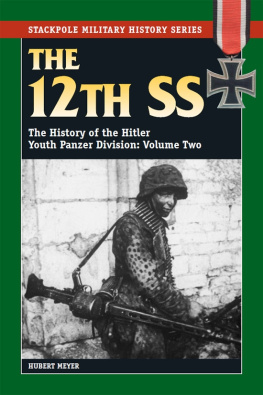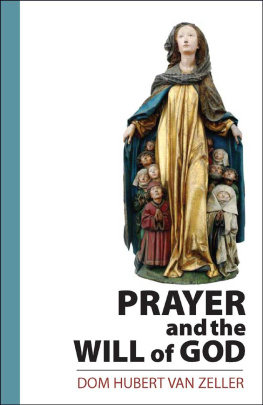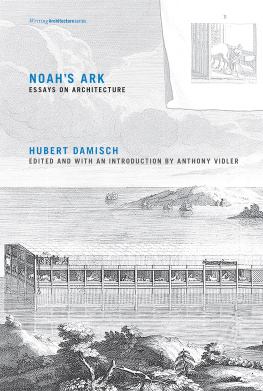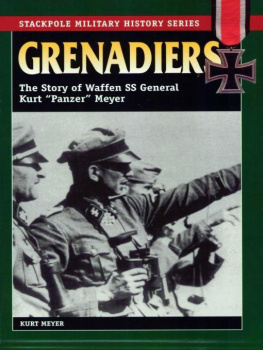hubert Meyer - The 12th SS
Here you can read online hubert Meyer - The 12th SS full text of the book (entire story) in english for free. Download pdf and epub, get meaning, cover and reviews about this ebook. year: 2020, publisher: Stackpole Books, genre: Science fiction. Description of the work, (preface) as well as reviews are available. Best literature library LitArk.com created for fans of good reading and offers a wide selection of genres:
Romance novel
Science fiction
Adventure
Detective
Science
History
Home and family
Prose
Art
Politics
Computer
Non-fiction
Religion
Business
Children
Humor
Choose a favorite category and find really read worthwhile books. Enjoy immersion in the world of imagination, feel the emotions of the characters or learn something new for yourself, make an fascinating discovery.

- Book:The 12th SS
- Author:
- Publisher:Stackpole Books
- Genre:
- Year:2020
- Rating:3 / 5
- Favourites:Add to favourites
- Your mark:
- 60
- 1
- 2
- 3
- 4
- 5
The 12th SS: summary, description and annotation
We offer to read an annotation, description, summary or preface (depends on what the author of the book "The 12th SS" wrote himself). If you haven't found the necessary information about the book — write in the comments, we will try to find it.
The 12th SS — read online for free the complete book (whole text) full work
Below is the text of the book, divided by pages. System saving the place of the last page read, allows you to conveniently read the book "The 12th SS" online for free, without having to search again every time where you left off. Put a bookmark, and you can go to the page where you finished reading at any time.
Font size:
Interval:
Bookmark:
Born in 1913 in Berlin.
Graduated from secondary school in 1913, studied chemistry during summer semesters from 1932 until 1934, passed basic exam.
Joined Regiment Deutschland of the SS-Verfgungstruppe (Special Disposal Troops) in August 1934.
In 1936-37 attended the third course at the officer cadet school (war school) Bad Tlz, graduated.
Transferred to the position of Zug (platoon) leader in the 10. Kompanie (company) of the Leibstandarte on 1 May 1937.
Participated in the Polish Campaign from 1 to 29 September 1939 as Zug leader in the 10. Kompanie of the Leibstandarte.
Participated in the Western Campaign from 10 May to 24 June 1940 as the adjutant of III. Bataillon of the Leibstandarte.
Participated in the Balkan Campaign in Yugoslavia and Greece from 6 to 30 April 1941 as company chief of the 12. Kompanie of the Leibstandarte. Participated in the Russian Campaign 1941/42 from 2 July to 8 August 1941 as company chief, as previouslywounded for the first timeand from 20 November 1941 to July 1942 as company chief, as previously. Transferred to the artillery regiment of the Leibstandarte for preliminary general staff training.
Participated in the battles for Charkow from 22 January to 9 March 1943 as Hauptmann (captain) at the staff of the 1. Regiment of the Leibstandarte and as leader of the III. Bataillon of the 1. Regimentwounded for the second time; transferred to the Divisional staff.
Attended the tenth war course at the war academy of the Heer (army) from 15 June to 30 September 1943, achieved qualification for the position of first general staff officer of a Panzer (tank) division.
From 1 October 1943 to 8 May 1945, first general staff officer of the 12. SS-Panzerdivision Hitlerjugendfrom 7 September to 31 October 1944, simultaneously, acting Divisional commander.
From 8 May 1945 to 8 April 1948, captivity and internment by the Americans.
The 12. SS-Panzerdivision Hitlerjugend marched initially into the area around Lisieux and then to the area southwest of Caen during the course of 6 June. At the same time, decisive developments were taking place at the coast of Normandy where the Allies had landed and in the two air landing zones. Only the course of the battles in the British-Canadian landing zone, in particular in the Caen area, will be examined here in broad outlines.
Units of Panzergrenadierregiment 125 of the 21. Panzer-division, which were stationed in the vicinity of the air landing zone of the 6th Airborne Division northeast of Caen, had, as already mentioned, attacked the British paratroopers and airborne landing units without orders from above. At 04.30 hours, the 7. Armee had requested action by the 21. Panzer-division east of the Orne river from Heeresgruppe B. General-leutnant Speidel decided, however, that such action was not immediately required. Parts of the II. Bataillon of Panzergrenadierregiment 192 of this Division had advanced, as ordered by Feldmarschall Rommel, already at the beginning of May into the area Anisy-Villons-Cairon-Buron-la Bijude (some eight kilometers northwest of Caen). They were ordered by the 716. Infanteriedivision at 03.10 hours, under the command of Grenadierregiment 736, to commence an attack on the enemy bridgehead near Bnouville. They had been able to push into the town, but the determined resistance by the British paratroopers prevented them from reaching the bridges across the Orne canal and the Orne river. This would have required support by Panzers. The Panzerregiment of the 21. Panzer-division was ready to march at that time with the I. Abteilung in an

area some ten kilometers northeast of Falaise and with the II. Abteilung in the area near Fresn-la-Mre, five kilometers east of Falaise. The Division was still without combat orders from the Heeresgruppe. Only at 06.15 was it attached to the 7. Armee, when the 7. Armee had reported that the enemy had opened fire from the sea on the coastal defense line at the mouth of the Orne river and near Asnelles (eleven kilometers northeast of Bayeux).
The 7. Armee attached the 21. Panzerdivision to the LXXXIV A.K. at 07.00 hours with the mission to destroy the airborne enemy east of the Orne river. At that time, the landings from the sea in the British-Canadian sector had not yet begun. However, they could be predicted since fire on the coastal defense positions from the sea had already been reported. The Armee obviously calculated that it would be possible to neutralize the airborne enemy east of the Orne river before the landings from the sea began. However, at 09.25 hours already, it became obvious that this decision had been a mistake. General Marcks, the commanding general of the LXXXIV. A.K. requested the attachment of the HJ Division for action west of Caen against the enemy who had been landed by sea, since the 21. Panzerdivision would be needed as a mobile reserve to the right of the Orne river. A good hour later, at 10.35 hours, he advised the Armee that he wanted to send the 21. Panzerdivision into action west of the Orne river because of the changed situation. Since the Division was far to the rear at the time, a re-routing would still have been possible.
This change in the mission of the 21. Pz.Div. had a very negative impact. The Assault Gun Abteilung 200 was, at this time, marching through Caen on its way to support the 8./Panzergrenadierregiment 192 which was stuck near -Bnouville. Since the Panzerregiment was now ordered to attack to the west of the Orne river, the Division wanted to add another armored unit to its Panzergrenadierregiment 125. It was in battle against paratroopers and airborne troops east of the Orne river. The Assault Gun Abteilung 200 was ordered to turn back and deploy through Caen to the east shore of the Orne river. It was needed at Bnouville. The 21. Pz. Div. was split into two parts: Panzergrenadierregiment 125, without I. Bataillon, and the Assault Gun Abteilung 200 were tied down in battle with paratroop and airborne units to the right of the Orne river, the bulk of the Division was supposed to attack west of the Orne. Parts of it had already been in battle for hours. The 8. Kompanie of Panzergrenadierregiment 192 was fighting near Bnouville. The I. Abteilung of Panzerartillerie-regiment 155 was in a fire fight from positions in the area of Mathieu. It had suffered significant losses through air attacks and fire from the sea. Heeres-Flakabteilung 305, together with the Flak command Caen, was in action to the northeast of the city. Finally, Panzerjgerabteilung 200 with twentyfour 8.8 cm guns was in position in the area northwest and west of the city. Massive action by the whole Division in a narrow area was thus no longer possible. But the loss of time, too, caused by the change in mission, had to have a negative impact.
While the bulk of the Division was on the march into the area north of Caen, the enemy had already been able to break through the coastal defenses in a number of spots and pushed his attack further inland. The Canadians who had landed near Courseulles advanced southward for approximately three kilometers during the morning. The units which had landed after the assault battalions were able to assemble only slowly on the narrow beach for a further advance. Immediately to the east, another Canadian brigade had taken Bernires after heavy fighting until 12.30 hours. The following brigade could start out towards the south only at 15.00 hours because of the crowding at the beaches. The German batteries, mostly in open firing positions, could have caused havoc here, but they had already been put out of action by aerial bombardment and shelling from the sea.
Font size:
Interval:
Bookmark:
Similar books «The 12th SS»
Look at similar books to The 12th SS. We have selected literature similar in name and meaning in the hope of providing readers with more options to find new, interesting, not yet read works.
Discussion, reviews of the book The 12th SS and just readers' own opinions. Leave your comments, write what you think about the work, its meaning or the main characters. Specify what exactly you liked and what you didn't like, and why you think so.












